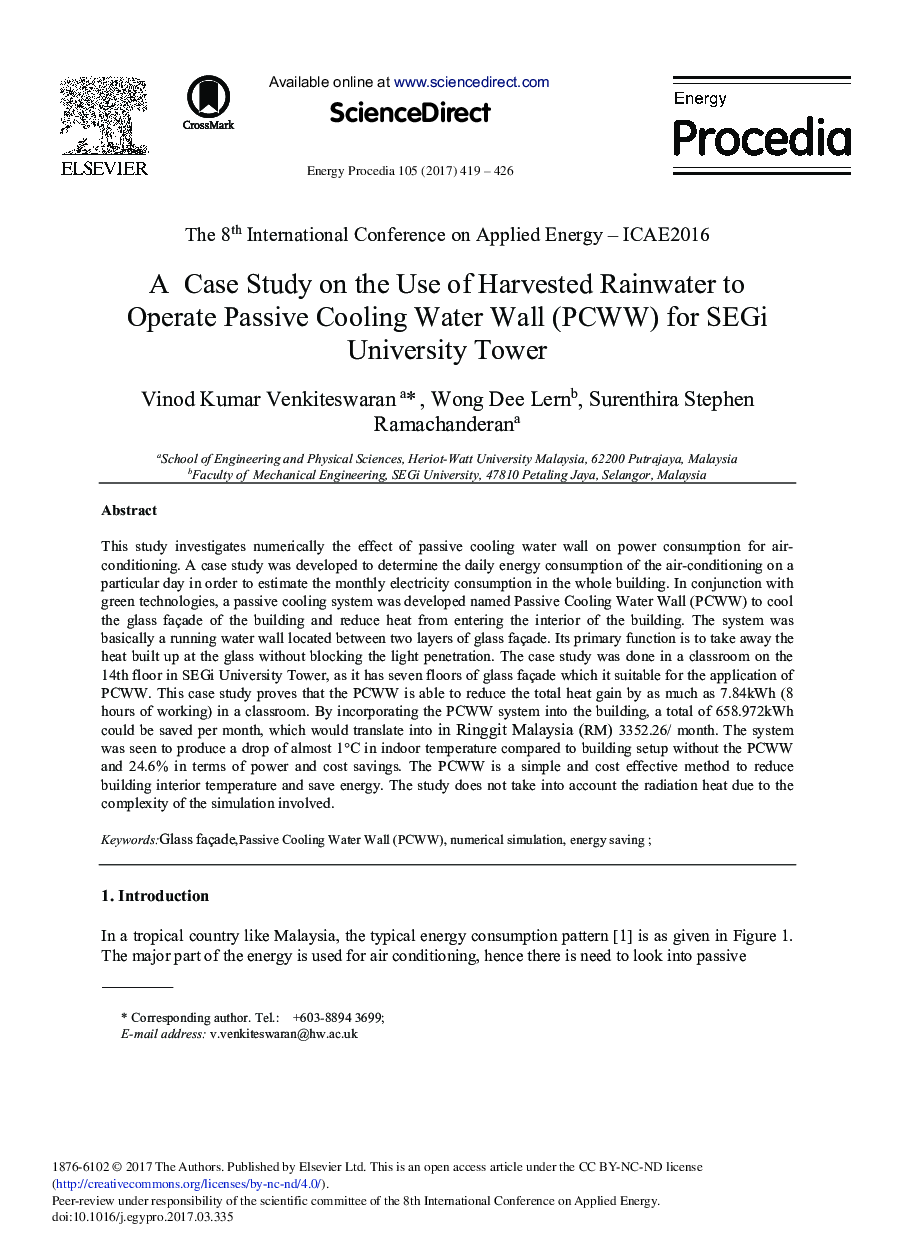| Article ID | Journal | Published Year | Pages | File Type |
|---|---|---|---|---|
| 5446287 | Energy Procedia | 2017 | 8 Pages |
Abstract
This study investigates numerically the effect of passive cooling water wall on power consumption for air-conditioning. A case study was developed to determine the daily energy consumption of the air-conditioning on a particular day in order to estimate the monthly electricity consumption in the whole building. In conjunction with green technologies, a passive cooling system was developed named Passive Cooling Water Wall (PCWW) to cool the glass façade of the building and reduce heat from entering the interior of the building. The system was basically a running water wall located between two layers of glass façade. Its primary function is to take away the heat built up at the glass without blocking the light penetration. The case study was done in a classroom on the 14th floor in SEGi University Tower, as it has seven floors of glass façade which it suitable for the application of PCWW. This case study proves that the PCWW is able to reduce the total heat gain by as much as 7.84kWh (8 hours of working) in a classroom. By incorporating the PCWW system into the building, a total of 658.972kWh could be saved per month, which would translate into in Ringgit Malaysia (RM) 3352.26/ month. The system was seen to produce a drop of almost 1 °C in indoor temperature compared to building setup without the PCWW and 24.6% in terms of power and cost savings. The PCWW is a simple and cost effective method to reduce building interior temperature and save energy. The study does not take into account the radiation heat due to the complexity of the simulation involved.
Keywords
Related Topics
Physical Sciences and Engineering
Energy
Energy (General)
Authors
Vinod Kumar Venkiteswaran, Wong Dee Lern, Surenthira Stephen Ramachanderan,
